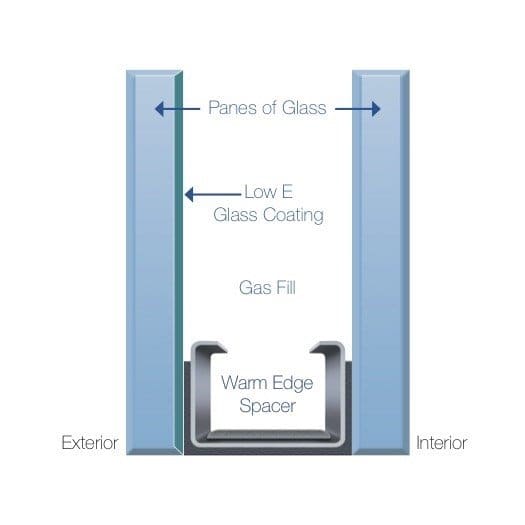About Warm Edge Spacer Technology
The layers of glazing in an insulating unit must be held apart by spacers. Window manufacturers started using aluminum spacers in the 1960’s and 1970’s Because of its excellent structural properties. Unfortunately, aluminum is an excellent conductor of heat, and the use of aluminum spacers contradicted the insulation of improved glazings. It also is more prone to condensation.
All Window Source windows utilize the latest warm edge spacer technologies that reduce thermal conductivity while improving surface and corner appearance over other insulating glass spacers. Our innovative warm edge spacer systems save energy by insulating the frame and edge of the insulated glass unit, making the unit’s perimeter much less conductive.
Warm edge spacers have become increasingly important as manufacturers switch from conventional double glazing to higher-performance glazing. For purposes of determining the overall window U-factor, the edge spacer has an effect that extends beyond the physical size of the spacer to a band about 2-1/2 inches (64 mm) wide. The contribution of this 2-1/2-inch-wide “glass edge” to the total window U-factor depends on the size of the window. Glass edge effects are more important for smaller windows, which have a proportionately larger glass edge area. For a typical residential-size window (3 by 4 feet/0.8 by 1.2 meters), changing from a standard aluminum edge to a good-quality warm edge will reduce the overall window U-factor by approximately .02 Btu/hr-sq ft-°F.

A more significant benefit may be the rise in interior surface temperature at the bottom edge of the window, which is most subject to condensation. With an outside temperature of 0°F, a thermally improved spacer could result in temperature increases of 6-8°F (3-4°C) at the window sightline–or 4-6°F (2-4°C) at a point one inch in from the sightline, which is an important improvement. As new highly insulating multiple layer windows are developed, the improved edge spacer becomes an even more important element.
Browse Doors, Roofing, Siding & Window
Replacement Options

